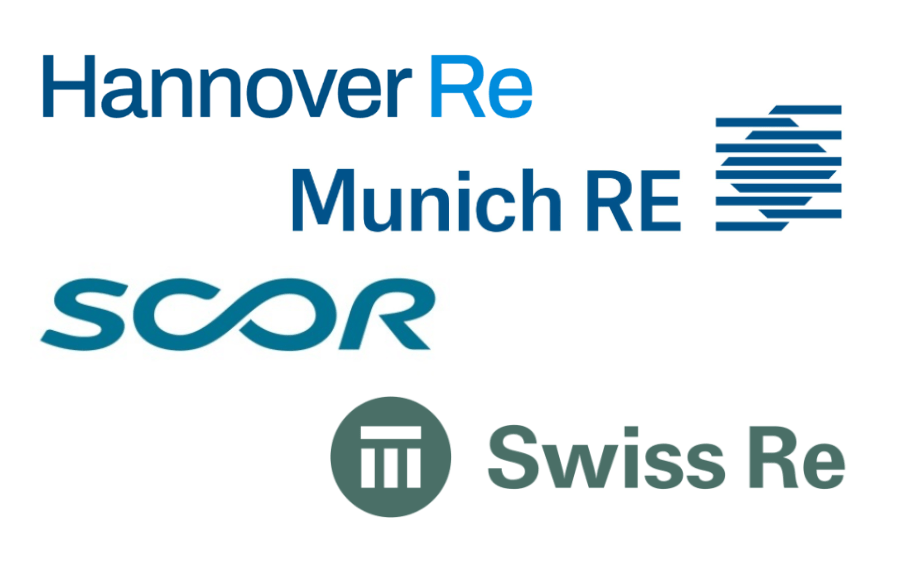Retro strategy differs for Big Four. Cyber cat bonds could be something they all agree on

While the retrocession strategies of Europe’s Big Four reinsurance companies may differ, the still relatively new retro option of sponsoring cyber catastrophe bonds may prove to be an area of commonality between them.
It is AM Best that highlights the differences between the retrocession strategies of the four major European reinsurance giants, Hannover Re, Munich Re, SCOR and Swiss Re.
The rating agency noted that Munich Re continues to be the reinsurer that uses the least retrocession, which is something the company has always been known for.
However, Munich Re does still have some capital partnerships in place that enable it to share its reinsurance book’s performance with investors and retrocessionaires in an aligned manner. Just this company does not leverage as much limit across the full-range of retro options available to it.
Swiss Re is next, with AM Best noting that this company has “shifted in recent years to increase its use of retrocession protection.”
Of course, Swiss Re has also increased its activity with capital market investors, growing its reinsurance sidecar and launching dedicated ILS funds as well, so clearly has a growing appetite to leverage capital sources that could be considered retrocessional, although again in an aligned manner.
Hannover Re and SCOR are known as the biggest users of retrocession. Both have aligned structures and capital partnerships in place with institutional investors, but both also use straight retrocessional hedges as well, we understand.
AM Best explained, “All four tap into the index-linked securities (ILS) market as part of their retrocession strategies, and in all forms available—catastrophe bonds, collateralised reinsurance, sidecars and industry loss warranties (ILWs). The Big Four European reinsurers’ traditional cat bonds provide primarily retro protection for peak risks such as named US windstorms and US earthquakes, as well as European windstorms.
“AM Best also sees reinsurance sidecar structures in place, such as collateralised quota share arrangements, alongside traditional retrocession covers.”
In its report on the four European reinsurance giants, AM Best highlights the emergence of the cyber catastrophe bond market and that already two of the four big reinsurers have sponsored cyber ILS deals.
These early transactions are a valuable addition to their retrocession arrangements and this is one area we could see activity in future for all of the major players, given the capital markets is a good alternative for a peril where retrocessional capacity has been limited in the past.
AM Best notes that, for the big four reinsurers, “The segment has also been among the first wave of cyber cat bond sponsors.”
First of the major reinsurers was Swiss Re as it successfully priced the market’s first industry-loss triggered cyber catastrophe bond, securing $50 million of coverage from the Matterhorn Re Ltd. (Series 2023-1) transaction.
Hannover Re sponsored the Cumulus Re (Series 2024-1) transaction, a $13.75 million privately placed cat bond which provides the company with retrocessional protection on a parametric trigger basis against cloud outage loss accumulations.
Munich Re and SCOR have yet to be seen in the cyber cat bond market. But it seems likely that, if these companies grow more in cyber reinsurance they could well find this a viable retro option for their businesses.
Which we suspect could make cyber catastrophe bonds an area of retrocessional agreement between the big four.
Commenting further on cyber catastrophe bonds, AM Best said, “These issuances signal both strong demand from issuers and strong interest from investors in securities that are linked to cyber, driven in part by the typically short-tail nature of the risks and by improvements in modelling.
“In addition, spreads are currently double compared with natural catastrophe bonds, as they would include a risk charge for the modelling uncertainties, and also factor in a novelty premium.
“The amounts issued for cyber bonds are still comparatively low and the issues to date can be considered part of an initial ‘testing’ phase. AM Best would expect a further increase in appetite from investors once more clarity is provided about systemic risk exposures, war and other event definitions, and once additional comfort about the maturity of cyber modelling has been reached.”
Read about every cyber cat bond transaction issued so far, including the first private cat bond deals and the more recent 144A cyber cat bond issuances, by filtering our Deal Directory by peril to view only cyber cat bond transactions.






